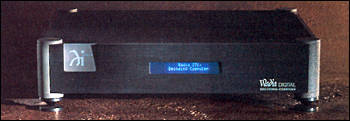| Columns Retired Columns & Blogs |
Wadia 27ix & Wadia 270 transport
History teaches us that the full flowering of any social phenomenon takes place after the seeds of its destruction have been sown. That tourist magnet, London's Buckingham Palace, for example, was built decades after the English Revolution and the Restoration had redefined the role of the British monarchy as being merely titular, and made the elected Parliament the real seat of power.

The same forces can be seen happening in the High End, where large advances in LP playback technology took place after the mass market had embraced CD. Similarly, it is only now, when DVD-Video has been with us for a couple of years and is being used as a carrier for higher-definition digital sound, that CD playback components are starting to reach the sonic performance that had been promised all along from the 16/44.1 medium.
Thus this review of a by-any-standard expensive CD-playback system from Wadia appears in the same issue of Stereophile as a review of one of the first audio-optimized DVD playback systems, from Muse Electronics. I will compare the Muse and Wadia systems in a Follow-Up next month, but let it be noted here that the Wadia 27ix is 96kHz-capable.
Wadia 27ix Digital Decoding Computer
The 27ix is the third-generation version of the original Wadia 27, which was reviewed by Robert Harley in the October 1996 Stereophile (Vol.19 No.10). I refer readers to that review for a full description of the processor's technology and functionality. Briefly, the circuitry is housed in a black-anodized chassis, its panels machined from solid aluminum. There are no controls on the sculpted front panel, just a blue fluorescent display and the Wadia logo. All functions are operated from the chunky metal remote control, which also operates the 270 transport. The display defaults to showing left and right volume, but also momentarily shows emphasis and polarity, as well as sample rate, selected input, and whether that input is clock-linked or not. The rear panel offers six data inputs, and both balanced and single-ended analog outputs.
The 27ix has the same digital volume control as the 850 and 860 players. This offers 100 0.5dB steps, and, as long as it's used near the top of that range—above "65," according to the manual—it will not degrade signal resolution.
- Log in or register to post comments



































